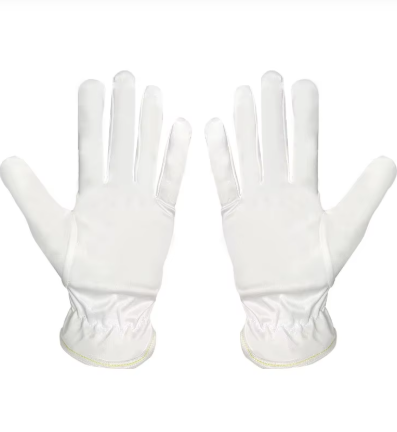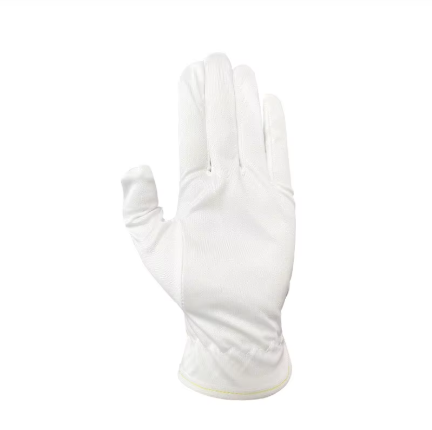Хагас дамжуулагчийн үйлдвэрлэл ба Цэвэр цаасны нарийвчлал
Дискийн үйлдвэрлэл: Жижиг хэсгүүдийг нэмэх
Цацрагийн чип үйлдвэрлэх үед орчин үеийн жижиг хэсгүүдээс чөлөөтэй байх нь чип зөв ажиллахад маш их чухал байдаг. Хамгийн жижиг ширхэг ч цацрагийг гэмтээж болох бөгөөд энэ нь ажиллагааны бага ажиллагаанаас эхлээд чипний бүрэн гэмтэл хүртэлх хүрээнд асуудал үүсгэж болно. Энэ асуудлыг шийдэхийн тулд үйлдвэрлэгчид эдгээр бэрхшээлтэй хэсгүүдийг багасгах хэрэгтэй байдаг. Нэг арга бол хүний гарыг ихэд тулгуурлахгүйгээр автомжуулсан системүүдийг ашиглах явдал юм. Энэ нь зохихгүй бохирдолыг багасгана. Нөгөө нэг арга бол шороо, агаар дахь бусад зүйлсийг татан авч, мэдрэг гадаргуун дээр унагахаас сэргийлдэг илүү сайн шүүлтүүрүүдийг суурилуулах явдал юм. Одоогийн үеийн салбарын талаар үзвэл хэсгийн бохирдолыг багасгасан компанийн үйлдвэрлэлийн шугам дээр илүү сайн үр дүнгийн талаар тайлангүүд хэлж байна. Зарим үйлдвэрт бүтээгдэхүүний чанарын бодитой сайжруулалтыг тэмдэглэсэн бөгөөд үйлдвэрлэлийн явцад жижиг хэсгүүдийг хянаж эхэлснээр илүү сайн үр дүнгийн талаар мэдээлж байна.
Гажилт багасгахын тулд цэвэрхэн өрөөний дүрэм
Хагас дамжуулагч үйлдвэрлэхэд цэвэрхэн өрөөний дүрэм дагаж мөрдөх нь бүтээгдэхүүний гажигийг багасгах, чанарыг сайжруулахад чухал ач холбогдолтой юм. Жишээ нь, агаарыг хэдий ч хүртэл шинээр сольж байгаа, температурыг зөв хянах, чийглэгийн түвшинг тогтвортой байлгах зэрэг нь бохирдолыг бууруулахад тусалдаг. Ажилчид цэвэрхэн өрөөний дотор арьсны чулуу, утас наалдахыг саатуулах зорилготой цонхисон халат, шүргэлцэх маск зэрэг тусгай хувцас өмсдөг. Ихэнх газар ажилчид зон бүрт шинэ хувцас өмсөхийг шаарддаг бөгөөд тоног төхөөрөмжийг арилгах, гар хоёр удаа угаах зэрэг цэвэрлэгээний цэгүүд байдаг. Хагас дамжуулагч тоног төхөөрөмж болон материалын олон улсын байгууллагаас гаргасан мэдээнд дүрсэлснээр цэвэрхэн өрөөний стандартыг сайн дагаж байгаа компаниуд нь гажигийн тоог нь бага байх хандлага үзүүлдэг. Энэ нь өнөөгийн зах зээл дээр үйлдвэрлэлийн зардлыг бууруулах, өрсөлдөх чадвараа бэхжүүлэхэд логиктой холбоотой юм.
Хэсэгт чөлөөт орчны стандартууд
SEMI-ийн баталсан стандартууд нь хагас дамжуулагч үйлдвэрлэлийн газруудад шаардагдах туйлаар цэвэр орчин бүрдүүлэхэд тусадаг ажээ. Эдгээр стандартууд яагаад чухал гэвэл, эдгээр нь байгууламжийн бүх өнцөгт нэгдмэл хүрээг бий болгож, хөрсөн дохилт, бохирдолтой тэмцэхэд тусалдаг. Эдгээр стандартуудыг бодитоор дагадаг болохыг шалгахын тулд үйлдвэрлэгчид нь албан ёсны баталгаажуулалтын процессыг өнгөрөх шаардлагатай байдаг бөгөөд энэ нь тэдгээрийн цэврийн өрөөнүүд нь тодорхойлсон салбарын шаардлагыг хангаж байгаа эсэхийг баталгаажуулдаг. Бодит байдал дээрх хэрэглээнд олон тооны чип үйлдвэрлэгчид SEMI протоколыг эзэмших замаар илүү үр дүнтэй ажиллаж байна. Зарим нь үйлдвэрлэлийн мөчлөгийг түргэсгэсэн гэсэн мэдээлэл өгч байна, зарим нь гаралтын бүтээгдэхүүндээ дутагдал багасгасан гэж мэдэгдэж байна. Үйл ажиллагааг илүү гладкийн байдлаар явуулахаас гадна эдгээр стандартуудыг дагаж мөрдөх нь компаниудад зах зээл дээрх давуу талыг олгож байна, учир нь хэрэглэгчид нь тогтвортой чанарын хяналтанд хийгдсэн бүтээгдэхүүнд итгэлтэй байдаг.
Эмийн санхүүгийн лабораторийн GMP харгалзал
Цэвэр үйлдвэрлэл дэхь утаслаггүй батлагдсан бичилтүүд
Эмийн бүтээгдэхүүн үйлдвэрлэх үед стериль орчин бий болгохын тулд партийн бичигт линтээс чөлөөтэй байлгах нь маш чухал юм. Баримт бичиг материалын линт нь бүтээгдэхүүнд халдвар тараах, стериль стандартыг алдагдуулах магадлалтай. Энэ асуудлыг шийдвэрлэхийн тулд онцлог боловсруулсан цаас, энгийн хэрэглээнд бага хэсэг ялгаруулдаг зохион бүтээгдсэн бичгийн харандаа зэрэг тусгай аргуудыг ашигладаг. Эдгээр аргууд нь зөвхөн халдварыг л устгахгүй, үйлдвэрлэлийн явцад бүх алхмыг илүү үр дүнтэй хянах боломжийг олгодог. GMP шаардлагын дагуу FDA-гийн дүрэм журмын дагуу цэвэр баримт бичигтэй байх нь эмийн чанарыг хянаж чаддаггүй зүгээр л сайн дадал биш харин заавал мөрдөх ёстой юм. Тохирохгүй бичилт хийсэн үйлдвэрлэгчид жолоомлох торгуулийн болон бүтээгдэхүүний аюулгүй байдал алдагдах эрсдэлтэй байдаг.
Аудитын хяналттай баримт бичигтэй ажиллах практик
Эмийн салбарт зохицуулах шаардлагыг хангахын тулд зохих аудитын баримт бичгийг бүрдүүлэх нь зүгээр л сайн санаа биш харин тийм ч амар биш юм. Эдгээр баримт бичгүүд нь компанийн үйл явцын бүх алхмыг хянах, бичилтүүдийг үр дүнтэй удирдах боломжийг олгодог бөгөөд энэ нь аудитын үед шалгагчид сайн дураараа анхаарал хандуулдаг зүйл юм. Одоо ихэнх компаниуд энэ зорилготойгоор тусгай програм хангамж ашигладаг. Түгээмэл ашиглагддаг зарим системүүд нь цахим гарын үсэг зурж болох болон автоматаар бодит хугацааны дагуу шинэчлэлт хийдэг тул хэрэгтэй үедээ хамгийн сүүлийн мэдээлэлд хандах боломжийг олгодог. FDA-гийн мэдээлснээр баримт бичгийн сайн дадалтай компанийн шалгалтанд тэнцэх магадлал нь цаасан хөтөлбөртэй ажилладаг компанийг бодвол ойролцоогоор 30%-иар илүү байдаг. Зохицуулгын дагуу байгаа эмнэлгийн бизнесүүд өртгийг нь хянаж байхын зэрэгцээ сайн баримт бичгийн инфраструктурт хөрөнгө оруулах нь зохицуулгын зөвшөөрөл болон үйл ажиллагааны үр дүнтэй байдал хоёуланд нь ашигтай сонголт юм.
Идэвхит бодисын эргэлтэд бохирдлыг хянах
Эмийн бодисын идэвхит бүтэц (API) -тэй ажиллах үед бохирдлыг хялбархан тусгаарлах нь эмнэлгийн аюулгүй байдлыг хангахыг зорьсон эм үйлдвэрлэгчдийн хувьд чухал асуудал болон үлдэж байна. Эмийн салбарын мэргэжилтнүүд үйлдвэрлэлийн талбайн дагуу хүчин чадалтай хяналт тавих, орчныг сайтар шалгах замаар хүссэн бус бодисууд холилдохыг саатуулахыг зөвлөж байна. Хэрэглээний хувьд агаарын шүүлтүүрийг суурилуулах, чийглэгийг зохицуулах, цэвэрхэн өрөөний нүүрстөрөгчийн тоог регламентоор шалгах зэрэг аргууд хэрэгжүүлж болно. Судалгаагаар идэвхит бүтцийн цэвэр байдал нь эцсийн эм бэлдмэл эмнэлгийн аюулгүй эсэхтэй тодорхой холбоотой байдаг тул компанийнууд бохирдлыг урьдчилан сэргийлэх стратегид хөрөнгө оруулдаг. Хяналт шалгалтанд хүрэлцэхүйц байж, нэр хүндээ хамгаалуулахыг хүсэж буй фармацевтын компанийн хувьд боломжит бохирдлыг удирдахад анхааралтай хандах нь зөвхөн сайн дадал биш, хууль эрх зүйн харилцааг хангах, үр дүнтэй эмчилгээг хүргэхэд чухал шаардлага юм.
Эмнэл зүйн төхөөрөмж цэвэрлэх дүрэм журам
Мэс заслын багажны ISO 5-р ангийн боодол
ISO 5-р ангийн боодлын стандарт нь мэс заслын багажийг цэвэр байлгахад чухал үүрэг гүйцэтгэдэг. Эдгээр зааварчилгаанууд нь тоног төхөөрөмж рүү нян орж эхлэхээс хамгаалах тодорхой цэвэр байдалын шаардлагыг тогтоодог бөгөөд үйлдэл хийж буй үед өвчтөнд хамгаалалт үзүүлдэг. Материалын талаар яривал онцгой хуванцар бооны цаас, тодорхой металл хэсгүүд нь бохирдолоос сэргийлэх чухал хамгаалалтын хүрээг бүрдүүлдэг. ЭЗБ-ын судалгаагаар мэс заслын дүрэм журам эрхэмлэдэг эмнэлгүүд нь энэ дүрэм журамгүй эмнэлгүүдтэй харьцуулахад халдварын түвшин бага байдаг нь тогтоогдсон. Тиймээс ISO 5-р ангийн стандартыг баримтлах нь зөвхөн зөвлөгөө биш харин мэс заслын халдварыг бууруулахыг хүсч буй эмнэлгүүдийн хувьд заавал мөрдөх ёстой юм. Эцэст нь, хэрэв боодлын стандартыг сахиулаагүй бол хүнд хүчтэй хүндрэлүүд үүсэх болно.
Цэвэр цаасны асептик шилжүүлэгт оролцож буй үүрэг
Эмнэлгийн багаж тоног төхөөрөмж үйлдвэрлэхэд цэвэр цаас нь асептик шилжүүлэх үед хамгаалах давхарга болгон ажилладаг тул ач холбогдолтой оролцоотой байдаг. Энэ материал онцлог нь хамгийн бага тоос үүсгэх чанар, эрчимтэй цэвэршилийн шаардлагыг хангахад байдаг бөгөөд бүх зүйлийг стерилтэй байлгахад тусалдаг. Мэдрэг тоног төхөөрөмжтэй ажиллах үед цэвэр цаасыг ашиглавал дараа нь биологийн хүнд аюул учруулж болох бохирдолыг урьдчилан сэргийлдэг. Лабораторид хийсэн судалгаа энэ талаар баталгаажуулж байгаа бөгөөд зарим туршилтаар цэвэр цаас ашиглах журам батлан мөрдөгдсөнөөр микробын тоо 40%-иар буурсан гэж тайлагнажээ. Стерил орчинд ажилладаг хүмүүст стандарт ажлын журмын дотор цэвэр цаасыг нэвтрүүлэх нь зүгээр л сайн дадал биш, үйлдвэрлэлийн бүх шатанд бүтээгдэхүүний чанарыг хадгалахын тулд бараг даалгавар мэт юм.

Стерилжүүлэх баталгаажуулалтын процессууд
Эмнэлгийн багаж төхөөрөмжийг цэвэр байлгах үед энэ нь маш чухал байдаг. Үнэн зөв процедурууд нь биологийн бохирдол, нянгийн эндотоксинуудыг шалгах гэх мэт хэд хэдэн ялгаатай туршилтуудыг хамруулдаг. Энэ нь бидэнд юу хэр цэвэр байгааг мэдээж, зүйл зөрүү үүсэхэд юуг засах хэрэгтэйг зааж өгдөг. Эхний шатны баталгаажуулалтын дараа ч мөн л цаашид хяналт тавих ажил үргэлжилдэг бөгөөд энэ нь бүх зүйлийг цэвэр байлгах стандарттай нийцүүлэн барьж байгаа юм. ISO гэх мэт байгууллагуудын зааварчилгаанууд нь зөв ариутгах ажиллагааны чухлыг тогтмол дурьддаг бөгөөд энэ нь байнгын сайн үр дүн гаргаж байхад тусалдаг. Бид эдгээр баталгаажуулалтыг байнга хийх замаар нянгийн оролцоог багасгаж, өвчтөнг хамгаалж, эмнэлгийн тоног төхөөрөмжийг аюулгүй байлгах боломжийг олгодог.
Агаарын онгоцны электрон төхөөрөмжийн угсралтын шаардлага
Нисдэг машины үндсэн системд гадны объектын орж буйг урьдчилан сэргийлэх
Авионикийн угсралтын үед гадны эдлэлийн бохирдлыг (FOD) зогсоох нь маш чухал юм. Учир нь жижиг бохирдол эсвэл металлын хэсгүүд нисдэг тоног төхөөрөмжийн чухал системүүдэд муугаар нөлөөлж болно. Ихэнх үйлдвэрлэгчид үйлдвэрлэлийн явцад нарийн цэвэрлэгээний арга хэмжээнүүд болон байнгын шалгалтуудын тусламжтайгаар ажлын бүсийг цэвэр байлгаж байна. Зарим компаниуд тоног төхөөрөмжийн зохицолтой үед давтамжтай үйлчилгээ хийлгэж, жижиг бөөмсийг асуудал болгохын өмнө нь барих зориулалтын тусгай багаж төхөөрөмжүүдэд хөрөнгө оруулж байна. Салбарын сүүлийн тайлангуудын дагуу FOD-тэй холбоотой асуудлууд нисэхийн компаниудад жилд хэдэн сая долларын хохирол учруулж байгаа бөгөөд пассажир, ажилчидад бодит аюул бий болгодог. Тиймээс одоо олон авиацийн компани FOD-ыг урьдчилан сэргийлэхийг зүгээр л жагсаалтын нэг зүйл биш, харин өдөр тутмын ажлын дэс дараалал болгон авч үзэж байна.
Компонентийн хяналтын цэвэрхэн өрөөний цаас
Цэвэрхэн өрөөний цаас нь агаарын тээврийн хурдны бүх бүрэлдэхүүн хэсгүүдийг хянахад маш чухал ач холбогдолтой. Энэ цаасыг онцлог болгож буй зүйл гэвэл их хэмжээний нүх гаргадаггүй, бохирдлыг чөлөөтэй байлгадаг явдал юм. Энэ нь маш цэвэр үйлдвэрлэлийн орчинд маш их ач холбогдолтой. Компаниуд цэвэрхэн өрөөний цаасыг ашиглах үед бүрэлдэхүүн хэсэг бүрийн талаар нарийн бичилт хөтлөж болдог. Ийм төрлийн баримт бичиг нь ажилтан бүрийн хариуцлагыг нэмэгдүүлж, алдаа гарах магадлалыг бууруулдаг. Аюулгүй байдал ч сайжирдаг, учир нь хэсгүүдийг андуурч холиходоггүй, чухал зүйлийг орхиж болохгүй байдал багасдаг. Агаарын тээврийн салбарт үйлдвэрлэгчид эдгээр цэвэрхэн өрөөний материалыг ажлын урсгалд нь оруулах замаар асуудлыг илүү хурдан олох боломжийг бий болгожээ. Хурдны бүрэлдэхүүн хэсэгт юу нэгэн буруу болсон тохиолдолд техникийн ажилчид хариуцлага хүлээхгүйгээр алдааны үнэн зөвийг нь хурдан тогтоож чаддаг.
Нарийн нарийн хурдны AS9100 стандартын дагуу боловсруулах
AS9100 стандарт нь агаарын тээврийн төхөөрөмжүүдийг үйлдвэрлэхэд чухал үүрэг гүйцэтгэдэг бөгөөд чанарын удирдлагыг баталгаажуулах, сайжруулах боломжийг олгодог. Компаниуд AS9100-ийн зааврыг дагаж мөрдөхөд нисэх онгоцны хэсгүүдийг угсрах үед бүтээгдэхүүний чанар, аюулгүй байдал нь сайжирдаг. AS9100-д төрөлжсөн олон компани үйлдвэрийн талбайд бодит сайжралыг ажигладаг - үйлчлүүлэгчид илүү хангалттай байдаг, ажлын урсгал гладаг болдог, үйлдвэрлэл нь алдаанд бага өртөмтгий болдог. Эдгээр стандартыг баримтлах нь авиацийн байгууллагуудын тавих эрчимтэй аюулгүй байдалын шаардлагыг хангах, үйлчлүүлэгчид болон зохицуулах байгууллагуудын итгэлийг бий болгоход тусдаг. Цөөн хэсгээс эхлээд нисэх онгоцны салбарын ихэнх томоохон тоглогчид AS9100-г хүлээн зөвшөөрсөн бөгөөд бүх зүйлийг чанарын өндөр түвшинд байлгахад тусалдаг.
Хүнсний аюулгүй байдал, чанарын баталгаажуулалтын хэрэглээ
Микробиологийн түүвэрлэлт цэвэр орчинтой
Микробиологийн түүвэр авах үед маш цэвэр орчинд ажиллах нь хоолны аюулгүй байдал шалгах үед итгэл үнэнтэй үр дүн гаргахад маш их нөлөө үзүүлдэг. Түүврийг зохистойгоор авснаар бодитоор оршин байгаагүй бохирдлыг илрүүлэх магадлал багасдаг тул хоолны нийлүүлэлтийн боломжит аюулд холбогдсон алдаатай мэдэгдлүүд багасдаг. Лабораторид ихэвчлэн бүх зүйлийг цэвэр байлгахын тулд энгийн дүрэм журмын дагуу ажилладаг - тоног төхөөрөмжийг анхандаа ариутгадаг, дараа нь техникийн ажилчид нэмэлтээр гар хүрээ авч, ламинар урсгалын тавцан дор ажилладаг бөгөөд гадны нянгаас хамгаалдаг. Салбарын тайлангууд нь лабораторид цэвэр байдлын стандартыг дагаж мөрдөхөд тэдгээрийн шинжилгээнд халдварлсан нянгүүдийг харьцангуй бага илрүүлдэг, энэ нь нийт процессийг илүү нарийвчлалтай болгодог. Хоол хүнс үйлдвэрлэгчдэд энэ төрлийн нарийвчлал нь зөвхөн сайн шинжлэх ухаан биш, харин хэрэглэгчдийг дахин дахин худалдан авалт хийхэд итгүүлдэг, учир нь хүмүүс өвчлүүлж болзошгүй бүтээгдэхүүнийг худалдаж авахыг хүсдэггүй.
Боловсруулалтын шугамын ХАССП Баримт бичиг
Халдваргүйжүүлэх болон Шийдвэрлэх Чухал Цэгүүдийн (HACCP) систем дэх бичгийн жагсаалт нь хүнсний аюулгүй байдалд маш чухал ач холбогдолтой байдаг. Байгууллагууд нарийн бичгийн мэдээллийг хадгалж байвал дүрэм журамд захирагдах боломжтой болох бөгөөд зүйл буруу болсон тохиолдолд асуудлыг хялбархан илрүүлэх боломжийг олгодог. Бичгээр бичсэн HACCP төлөвлөгөө нь боломжит аюул зүйлийг илрүүлэх, тэдгээрийг халдварлахаас сэргийлэх ямар арга хэмжээ авахыг тодорхойлохөд тусалдаг. Хүнсний аюулгүй байдал эрхэлсэн мэргэжилтнүүд бичгийн бүрдүүлэлт зөв хийгдсэн тохиолдолд HACCP систем бат бөх байгуулагдана гэдгийг онцолдог. Хэрэв сайн бичгийн мэдээлэл байхгүй бол чухал мэдээлэл нь холилдох эсвэл бүрэн алга болох бөгөөд үйлдвэрлэлийн шугам дээр асуудал үүсгэх бөгөөд хүнсний аюулгүй байдалд бодит эрсдэл үүсгэдэг. Эдгээр нарийн бичгийн мэдээллүүд нь хүнсний аюулгүй байдалтай холбоотой асуудал гарсан үед компаниуд хурдан арга хэмжээ авах боломжийг олгодог бөгөөд асуудал гарахаас өмнө хүнсний аюулгүй байдалд мэдээллийн бичгийн бүрдүүлэлт хэр чухал байгааг харуулж байна.
Шүүлтийн шинжилгээгээр хүнсний нөөц дахь алергийн эсрэг удирдлагын арга
Шүүлтүүрийн шинжилгээний арга нь хөндлөн бохирдлын асуудал үргэлж байгаа хүнсний үйлдвэрийн газруудад алергийн эрсдлийг шийдвэрлэх шинэ арга юм. Систем нь өөр өөр үйлдвэрлэлийн бүсүүдэд тарахаасаа өмнө алергийн жижиг бөөмсийг илрүүлдэг шүүлтүүрийн төхөөрөмж ашиглан ажилладаг бөгөөд энэ нь бүх үйл ажиллагааг оролцогч бүхэнд аюулгүй болгодог. Хоолны үйлдвэрлэгчид ихэвчлэн одоо үед HEPA шүүлтүүр зэрэг зүйлсийг суурьлуулдаг учир нь эдгээр нь алергийн уусмалаас чөлөөт бүтээгдэхүүн бүхий бүтээгдэхүүнд дуусах ёсгүй байсан алергийн жижиг бөөмсийг барьж авдаг. Үйлдвэрлэлийн өгөгдлүүд нь алергийг хянахад энэ шүүлтүүрийн арга үнэхээр үр дүнтэй байгааг харуулж байна. Энэ нь аллергитай хүмүүст зориулсан хоолны хэрэгцээ шаардлагатай хүмүүсийн хувьд аюултай аллергийн урвалыг бууруулдаг. Эдгээр шинэ шүүлтүүрийн шийдэлд шилжин өөрчлөлт хийсэн үйлдвэрлэгчид нийтээр эрүүл мэндийг хамгаалах нь цаашлаад хоолны шошго болон аюулгүй хоолны дэглэмийг сайн дураараа биелүүлдэг хэрэглэгчидтэй итгэлийг бий болгодог.
Салбарт хамааралтай бохирдлыг хянах стандарт
ISO 14644 Цэвэрхэн өрөө ангилалын стандарт
ISO 14644 цэвэрхэн өрөө ангилалын систем нь бохирдолыг хянах шаардлагатай олон салбарт чухал ач холбогдолтой хүрээг тодорхойлдог. Эдгээр стандарт нь цэвэрхэн өрөөнүүдийг тэдгээрийн агуулж буй бөөмсийн тоогоор нь ангилдаг тул хагас дамжуулагчийн үйлдвэрлэл болон эмийн бодис үйлдвэрлэлийн салбарт маш нарийн хяналт тогтоосон орчинд ажиллах боломжийг олгодог. Жишээлбэл, хагас дамжуулагчийн үйлдвэрлэлийг авч үзвэл, ихэнх чип үйлдвэрлэгчид Class 1 цэвэрхэн өрөөнд ажилладаг, учир нь хамгийн жижиг бөөмс ч үйлдвэрлэлийн явцад мэдрэг хэсгүүдэд хор хөнөөл учруулж болдог. Эмнэлгийн компаниуд мөн ижил стандартыг баримтладаг, учир нь ямарч бохирдол нь эмийн бодисын аюулгүй байдал болон үр дүнд сөргөөр нөлөөлж болзошгүй. Intel болон Pfizer зэрэг томоохон нэрүүд эдгээр зааврыг байнга дагадаг. Үр дүн нь бохирдолыг илүү сайн хянах нь технологийн болон эрүүл мэндийн салбарт өндөр чанартай бүтээгдэхүүн үйлдвэрлэдэг.
Химийн орчин дахь материалтай нийцэх чанар
Цэвэрхэн өрөөнд зориулсан оновчтой материалыг сонгох нь идэвхитэй бохирдолын асуудлыг шийдвэрлэхэд маш чухал юм. Компаниуд сонгож буй материалын тогтолцоо нь химийн бодисуудыг задлахгүйгээр тэсвэлдэг, мөн орчинд бохирдлыг нь дамжуулж чаддаггүй байх ёстой. Ихэнх аж ахуйн газрын стандартууд нь энгийн цэвэрлэгээний бодисуудын нөлөөнд тэсвэртэй, урвалд ордоггүй сонголтыг зааж өгдөг. Урвалын бус материалыг буруу сонгосноос үүдэн Журнал of Industrial Hygiene-ийн судалгаагаар томоохон бохирдолын тохиолдол гарч, бүтээгдэхүүний нэг багцыг алдагдуулсан тохиолдлуудыг олжээ. Энэ нь материалыг сонгох процессын чухлыг дахин баталж байна. Материалын нийцэл нь зөвхөн техникийн багийн асуудал биш, өдөр тутмын үйл ажиллагаанаас эхлээд хүртэлх хүрээнд, хүртэлгүйгээр хаалттай болон аюулгүй байдлын асуудалд ч нөлөөлдөг.
Нарийн цэвэр цаасны амьдралын мөчлөгийн удирдлага
Наалдамтгай цэвэрлэгээний цаасны ашиглалтын хугацааг зохистой удирдах нь олон салбарт ариун цэврийг хангаж, орчин үеийн экологийн шаардлагад нийцэхэд чухал ач холбогдолтой юм. Энэ бүх процесс нь зохистой ашиглалт, тодорхой зааварчилгаа, хариуцлагатай хаягдал арилтгах аргыг шаарддаг бөгөөд эдгээр онцгой цааснууд өөрийн зориулалтынхаа дагуу ажилладаг боловч газар орны хувьд хор хөнөөл бий болгодоггүй байх ёстой. Одоо ихэнх компаниуд цаасны эргэн боловсруулсан материал эсвэл бусад урт хугацаат тэжээл эх үүсвэрээс хийсэн цаасыг худалдан авахыг илүүд үздэг бөгөөд энэ нь байгаль орчныг хамгаалахын тулд дэлхийн хэмжээнд явуулж буй арга хэмжээнд таарч байна. Цэвэрлэгээний цаасны зах зээлийн нэг томоохон тоглогчийн сүүлийн үеийн судалгаа нь илүү нөгөөмөл орчин үеийн сонголт хийх нь экологийн хөнөөлийг хэмнэж, хаягдлыг багасгахад тусдаг бөгөөд компаниуд өөрсдийн экологийн үүлчлэлээ биелүүлэхэд тусалдаг байна. Эдгээр цаасыг ашиглалтын нийт мөчид нь хэрхэн ашиглах, хаях асуудлыг авч үзэх нь бизнесийн ашгийн тулд л биш, ирэх үеийн үед эрүүл ахуй орчинд дамжуулахын тулд ч чухал юм.
НӨАТ-ын хэсэг
Чимэгтэй хавсралт гэж юу вэ?
Цэвэр цаас нь нарийн орчин, жишээлбэл, стерилд хувилалт хийх эсвэл хагас дамжуулагчийн үйлдвэрлэл зэрэгт бохирдолыг урьдчилан сэргийлэх зорилготойгоор бага ширхэгт бөөм үүсгэх, өндөр цэвэр байдалтай байдлыг хангах зорилготой онцгой цаас юм.
Цэвэр цаас хагас дамжуулагчийн үйлдвэрлэлд ямар ач холбогдолтой вэ?
Цэвэр цаас нь бөөмгүй орчинг хангах замаар дэлгэцийн үйлдвэрлэл үеийн дутагдал багасгаж, үйлдвэрлэлийн чанар болон гарцыг сайжруулдаг.
Эмнэлзүйн төхөөрөмжийн үйлдвэрлэлд цэвэр цаас яагаад чухал вэ?
Цэвэр цаас нь бохирдолд төгс саад болох бөгөөд эмнэлгийн төхөөрөмжүүдийг барьж зөөх үед бохирдохгүй байхыг хангаж, микробиологийн бохирдолын эрсдлийг бууруулдаг.
Цэвэр цаасыг ямар салбарууд ашигладаг вэ?
Хагас дамжуулагчийн үйлдвэрлэл, эмнэлгийн төхөөрөмжийн үйлдвэрлэл, агаарын орон зай, эмийн бэлдмэл, хоолны үйлдвэрлэл зэрэг салбарууд цэвэр байдалд өндөр стандартыг хангах, бохирдолыг урьдчилан сэргийлэх зорилгоор цэвэр цаасыг ашигладаг.
Агаарын онгоцны угсралтанд цэвэр цаасыг яаж ашигладаг вэ?
Агаарын тээврийн хурдасны үед цэвэрхэн өрөөний цаас нь хурдасны үед деталь тоног төхөөрөмжийн бүртгэл мэдээллийг нарийн бичиж, хариуцлагыг нэмэгдүүлж, алдааны магадлалыг бууруулдаг.
Цэвэр цаас ашиглах нь байгаль орчныг хамгаалахад туслах уу?
Тийм, компаниуд цэвэр цаасыг дахин боловсруулсан эсвэл урт хугацаат цааснаас олж авч болох бөгөөд энэ нь байгаль хамгаалалтын арга хэмжээнд болон корпорацийн хариуцлагын инициативт хувь нэмрээ оруулдаг.
Гарчиг
-
Хагас дамжуулагчийн үйлдвэрлэл ба Цэвэр цаасны нарийвчлал
- Дискийн үйлдвэрлэл: Жижиг хэсгүүдийг нэмэх
- Гажилт багасгахын тулд цэвэрхэн өрөөний дүрэм
- Хэсэгт чөлөөт орчны стандартууд
- Эмийн санхүүгийн лабораторийн GMP харгалзал
- Цэвэр үйлдвэрлэл дэхь утаслаггүй батлагдсан бичилтүүд
- Аудитын хяналттай баримт бичигтэй ажиллах практик
- Идэвхит бодисын эргэлтэд бохирдлыг хянах
- Эмнэл зүйн төхөөрөмж цэвэрлэх дүрэм журам
- Мэс заслын багажны ISO 5-р ангийн боодол
- Цэвэр цаасны асептик шилжүүлэгт оролцож буй үүрэг
- Стерилжүүлэх баталгаажуулалтын процессууд
- Агаарын онгоцны электрон төхөөрөмжийн угсралтын шаардлага
- Нисдэг машины үндсэн системд гадны объектын орж буйг урьдчилан сэргийлэх
- Компонентийн хяналтын цэвэрхэн өрөөний цаас
- Нарийн нарийн хурдны AS9100 стандартын дагуу боловсруулах
- Хүнсний аюулгүй байдал, чанарын баталгаажуулалтын хэрэглээ
- Микробиологийн түүвэрлэлт цэвэр орчинтой
- Боловсруулалтын шугамын ХАССП Баримт бичиг
- Шүүлтийн шинжилгээгээр хүнсний нөөц дахь алергийн эсрэг удирдлагын арга
- Салбарт хамааралтай бохирдлыг хянах стандарт
- ISO 14644 Цэвэрхэн өрөө ангилалын стандарт
- Химийн орчин дахь материалтай нийцэх чанар
- Нарийн цэвэр цаасны амьдралын мөчлөгийн удирдлага
- НӨАТ-ын хэсэг




